 Researchers are developing a smart skin inspired by the cephalopod which can be used in 3D displays, as interfaces for the visually impaired, and to help reduce drag on marine vehicles.
Researchers are developing a smart skin inspired by the cephalopod which can be used in 3D displays, as interfaces for the visually impaired, and to help reduce drag on marine vehicles.
Monday, September 23, 2019
Researchers recreate living 3D displays (w/video)
 Researchers are developing a smart skin inspired by the cephalopod which can be used in 3D displays, as interfaces for the visually impaired, and to help reduce drag on marine vehicles.
Researchers are developing a smart skin inspired by the cephalopod which can be used in 3D displays, as interfaces for the visually impaired, and to help reduce drag on marine vehicles.
How to design efficient materials for OLED displays
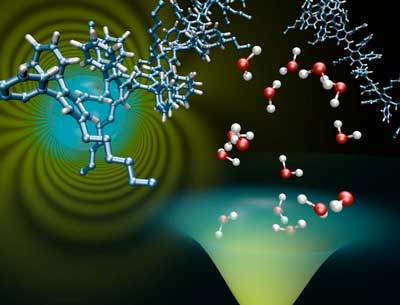 A major problem is that in many organic semiconductors the flow of electricity is hampered by microscopic defects. Scientists have now investigated how organic semiconductors can be designed such that the electric conduction is not influenced by these defects.
A major problem is that in many organic semiconductors the flow of electricity is hampered by microscopic defects. Scientists have now investigated how organic semiconductors can be designed such that the electric conduction is not influenced by these defects.
Wearable brain-machine interface could control a wheelchair, vehicle or computer
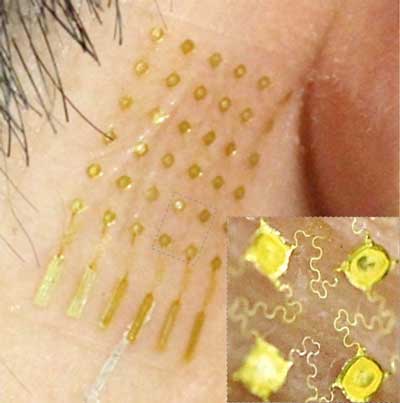 Combining new classes of nanomembrane electrodes with flexible electronics and a deep learning algorithm could help disabled people wirelessly control an electric wheelchair, interact with a computer or operate a small robotic vehicle without donning a bulky hair-electrode cap or contending with wires.
Combining new classes of nanomembrane electrodes with flexible electronics and a deep learning algorithm could help disabled people wirelessly control an electric wheelchair, interact with a computer or operate a small robotic vehicle without donning a bulky hair-electrode cap or contending with wires.
A process for making ductile glass
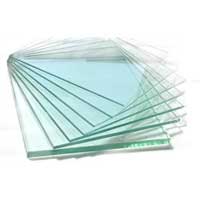 Numerous applications for special glass may include tougher smart phone screens and transparent structural materials.
Numerous applications for special glass may include tougher smart phone screens and transparent structural materials.
Researchers develop new framework for nanoantenna light absorption
 Researchers have developed nanoantennas that pack the energy captured from light sources, such as LEDs, into particles with nanometer-scale diameters, making it possible to detect individual biomolecules, catalyze chemical reactions, and generate photons with desirable properties for quantum computing.
Researchers have developed nanoantennas that pack the energy captured from light sources, such as LEDs, into particles with nanometer-scale diameters, making it possible to detect individual biomolecules, catalyze chemical reactions, and generate photons with desirable properties for quantum computing.
Tiny, biocompatible nanolaser could function inside living tissues
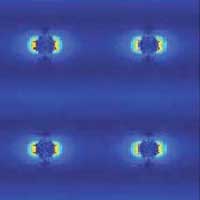 Nanolaser has potential to treat neurological disorders or sense disease biomarkers.
Nanolaser has potential to treat neurological disorders or sense disease biomarkers.
'Valley states' in this 2D material could potentially be used for quantum computing
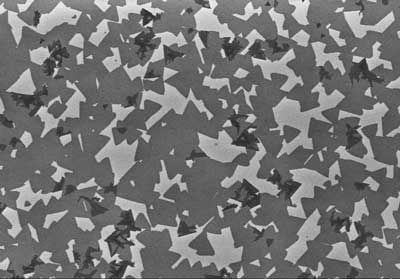 Physicists manipulate energy valleys in tungsten disulfide, with potential applications in quantum computing.
Physicists manipulate energy valleys in tungsten disulfide, with potential applications in quantum computing.
Graphene is actually a 3D material as well as a 2D material
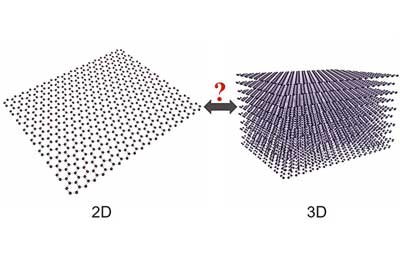 Researchers found that 2D graphene has many of the same mechanical properties as 3D graphite, which is a naturally occurring form of carbon made up from a very weak stack of many layers of graphene.
Researchers found that 2D graphene has many of the same mechanical properties as 3D graphite, which is a naturally occurring form of carbon made up from a very weak stack of many layers of graphene.
A new way to turn heat into energy
 The discovery could create more efficient energy generation from heat in things like car exhaust, interplanetary space probes and industrial processes.
The discovery could create more efficient energy generation from heat in things like car exhaust, interplanetary space probes and industrial processes.
Subscribe to:
Comments (Atom)
